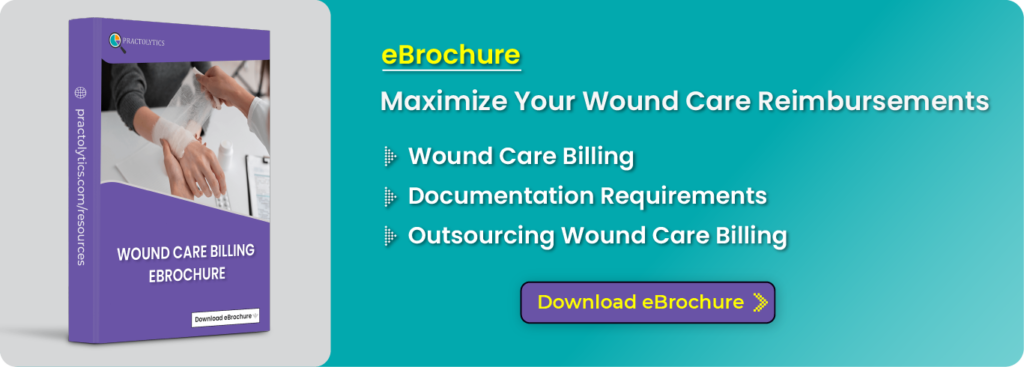A Guide for Clearing Your Confusions on Claims Rejection
No provider should face cash flow issues after putting in so much effort, but claim rejections can disrupt revenue if not handled correctly. Understanding and addressing these denials is essential for financial stability. Just like a tree thrives and bears fruit when properly nurtured, your practice’s revenue will grow when accurate coding and billing guidelines are followed. Our Guide for Clearing Your Confusions on Claims Rejection helps you navigate common pitfalls, reduce denials, and ensure timely reimbursements, so your practice can flourish without financial setbacks.
Pre-submission scrubbing of claims is the first stage of the billing process in revenue cycle management. This sets the platform for revenue, which include the discovery of eligibility and benefits verification, updating patient-related and insurance related data, and payor specific constraints.
Medical claim filing involves a lot of effort, from screening the claims for errors to submitting them to the payers. Also, don’t forget about the consequent steps after claims submission, which include tracking the claim and following up with the payers. Facing denials in claims will make you enter the worst stage of work.
Do you know that around 200 million claims get rejected each day. You heard it correct! It’s time to know about claims rejections in detail.
Table of Contents
Denials Differ From Rejections! Then What Are Claim Rejections?
Not all rejected claims are denied! Puzzling? The term “claim rejection” is new to you, so let’s look at the basics.
According to the payers, rejected claims aren’t compliant with the standards. In contrast, denials have been processed but are inaccurate. Rejected claims have the potential to be reworked, whereas denied claims are more equivalent to unpayable ones. In this case, you can get assistance from a clearinghouse, where you assess your claims and get things done correctly for final submission to payers.
Clearinghouse acts as a bridge for you and the payer, checking for mistakes and providing input in the form of rejection. The clearinghouse rejection does not mean that the payer will not reimburse your claim.
Please be aware that most of the advanced practice management systems like AdvancedMD, Eclinical Works, Athena do have processes in place to automatically submit the claims to the clearinghouse for final scrubbing before presenting the claim to your payers. Having an integrated clearinghouse eliminates the need to submit and check the status for any clearinghouse rejections in multiple systems.
Practolytics partnership will give access to AdvancedMD at no extra cost and you can use the integrated clearinghouse by which corrected claims are sent to hundreds of your payers, from just one portal.
Begin By Passing Through The Clearinghouse
One reason why clearinghouse rejections are better than payer rejections is: Insurance firms process millions of claims, vastly increasing their workload.
For instance, 39 million individuals rely on them, according to Aetna. That means in a single year, roughly 32 million adults have seen a doctor. Aetna was in control of the claims for those individuals for that specific year, which tends to result in 89,000 claims per day. Despite the possibility that this is not exact, keep in mind that this figure could also be higher.
Even though the payers have thousands of employees, staying active on all those claims is nearly impossible for them.
Two Advantages That Clearinghouses Provide
Expecting the payers to review and file rejections after seeing the number of claims they would examine, is not a wiser decision. Payers typically take two days for rejection and several weeks or months to disclose their denial status. Two days is still a long stretch compared to clearinghouse-level rejection that occurs more quickly.
The crucial benefit of using a clearinghouse is the second one. Payers are not in the practice of maintaining a record of rejected claims. Due to this, payers will only share the cause for rejection once.
However, clearinghouse rejections are helpful (not for your smile) but for your increased level of scrutiny. They act as a second opinion giver in choosing the claims-related credentials. In addition, they maintain a log of the history of rejections and provide details whenever needed.
Use them as an intermediary to carry on practice services without facing rejections and get the reviews done quickly.
Numbering 12 Reasons For Rejecting Your Claims
Not all payers follow the same process for submitting claims, but all will refuse your claims the same way if your records don’t meet their requirements. To help you understand why your claims are rejected, we’ve listed some typical causes in the order of most to least frequent reasons.
- Provider enrollment with payers is not done before claims submission.
- Inappropriate subscriber ID format.
- Inaccurate configuration of CPID and Payor IDs
- Coding regulation changed or usage of invalid or deprecated codes.
- Adjudication date or payment date from a primary payer missing in a COB claim.
- Incorrectly stating the alphanumeric Subscriber Group or Policy Number.
- Wrong zip code used in the subscriber loop.
- Not including the primary payers paid amount to the Medicare Secondary Payer claim.
- The specific claim’s unique Internal Control Number (ICN) is not mentioned.
- Improper procedural code assigned.
- Gender Specific Invalid diagnosis code (ICD10) given.
- The group number and Policy number are incorrectly provided (Both are different from each other).
Common Claims Rejections And Confusions
Claims rejection happens for two common reasons.
- What you provide as info might mismatch with the record that insurance payers have (or)
- The data does not comply with the regulations or standards outlined by payers.
The above-mentioned reasons will revert the claims, saying that the payer cannot process your claims. Clearinghouse will issue the same rejection, but you can change it as needed and send it again for on-time payments. We previously looked at some criteria for claim rejection; now, some more typical causes for claim rejection are:
Claim rejection reasons frequently include words like member, group, and patient. Although these are generally equivalent to the patient themselves, there are times when it varies with payers. If the reason for rejection is made apparent, you can avoid it. If not, the reviewing procedure will become chaotic.
Discrepancies in medical codes are the second issue, which was mentioned earlier too. Payers can easily reject when you use unauthorized codes because they are aware of the new set of codes and updates. You are either required to follow up with payers or discover a clearinghouse partner who can guide you and is knowledgeable about filing guidelines because filing claims also varies with payers.
What Steps To Take After Claims Rejections?
We can’t simply ignore claims rejection. Use the second opportunity given. Rejections are a sign of green light for denials. Therefore, it’s crucial to fix those errors before making your final approach to payers. To do so, follow these instructions.
- Find out what rejections are saved at the clearinghouse.
- Examine claims, then modify them as needed.
- Resend for one last review to the clearinghouse.
- Then send to payers for payment.
If you Consider these clearinghouse rejections as an additional billing step, then the loss is yours. Rather think of them as your shield to prevent denials.
Bottom Line
For a child to take its first step without falling, it requires some extra support from someone. Similarly, you need the assistance of outsourcing companies to make your billing stand tall.
Practolytics is committed to providing top-class RCM services for you. Leave your persistent payment concern in our skilled hands; we take pleasure in resolving those problems.
Practolytics with AdvancedMD partnership provides competent solutions to all your RCM needs. Claims scrubbing and eligibility checks are made easier with the clearinghouse integration. Just dial us to escape from denials.
Contact us at: +(803) 932-9624 (or) +(678) 940-8115. For more details email us at [email protected]
ALSO READ – Top 5 Medical Billing Software to Look Out for in 2023
Talk to Medical Billing Expert Today — Get a Free Demo Now!






